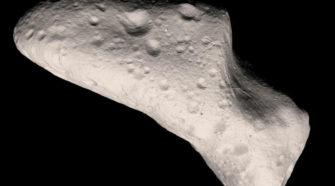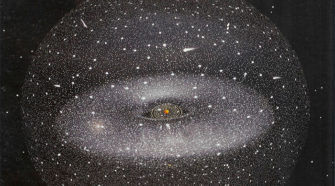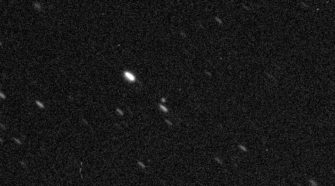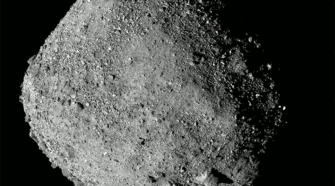Special Topic: Asteroid (433) Eros
Two weeks ago I devoted the “Special Topics” presentation to the subject of near-Earth asteroids. Up until almost the end of the 19th Century all of the over 400 asteroids that had been discovered up to that time orbited within the “main asteroid belt” between Mars and Jupiter, and the astronomers of that era were …
This Week in History: January 12-18
JANUARY 12, 1910: A group of diamond miners in the Transvaal in South Africa spot a brilliant comet low in the predawn sky. This was the first sighting of what became known as the “Daylight Comet of 1910” (old style designations 1910a and 1910 I, new style designation C/1910 A1). It soon became one of …
Comet of the Week: McNaught C/2006 P1
Perihelion: 2007 January 12.80, q = 0.171 AU After the LIncoln Near-Earth Asteroid Research (LINEAR) program based in New Mexico became operational in early 1998, the discovery rate for both asteroids (including, certainly, near-Earth asteroids) and comets exploded dramatically. This trend has continued on up to the present day with the various subsequent surveys that …
Special Topic: The Oort Cloud
When examined from the standpoint of orbital characteristics, comets appear to come in one of two broad categories: short-period and long-period. Short-period comets, as this term implies, have relatively short orbital periods and often have been observed at numerous returns, while long-period comets, obviously, have long orbital periods and usually have only been observed once. …
Asteroid discovered inside orbit of Venus
While, strictly speaking, it is not a “near-Earth” asteroid, an important asteroid has been discovered since I first put up this presentation. On January 4, 2020, the Zwicky Transient Facility survey, based at Palomar Observatory in California, discovered an 18th-magnitude object which was formally designated as 2020 AV2 when its discovery was announced on January …
This Week in History: January 5-11
JANUARY 5, 2005: The Kuiper Belt object now known as (136199) Eris is discovered by Mike Brown, Chad Trujillo, and David Rabinowitz on images taken in October 2003. Eris travels around the sun in a moderately-inclined and moderately eccentric orbit with a period of 558 years; it has one known moon (Dysnomia) and turns out …






